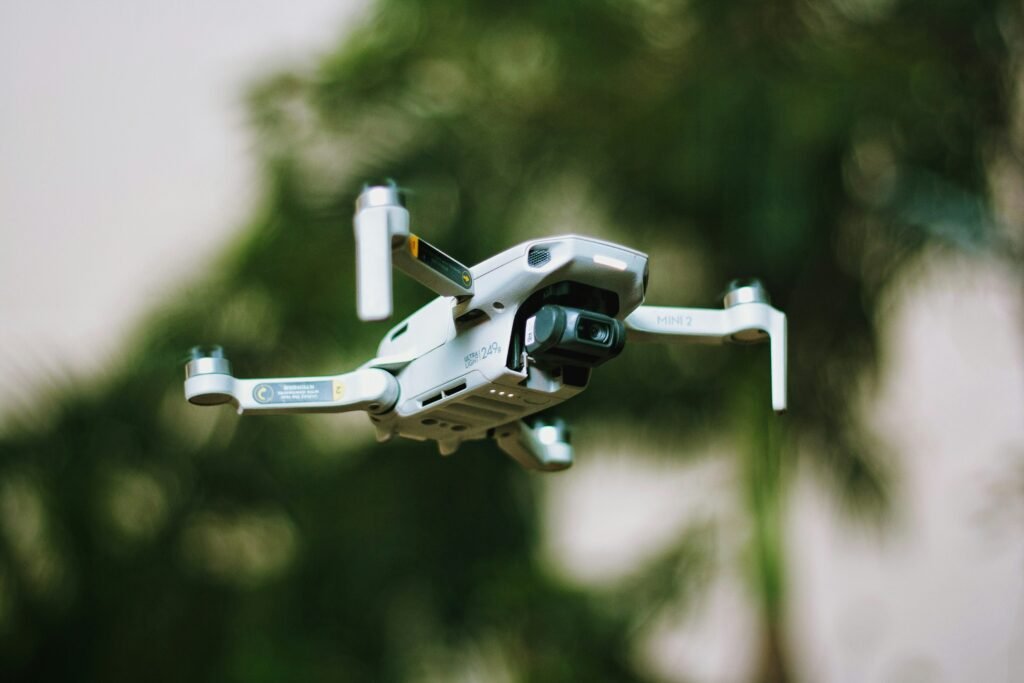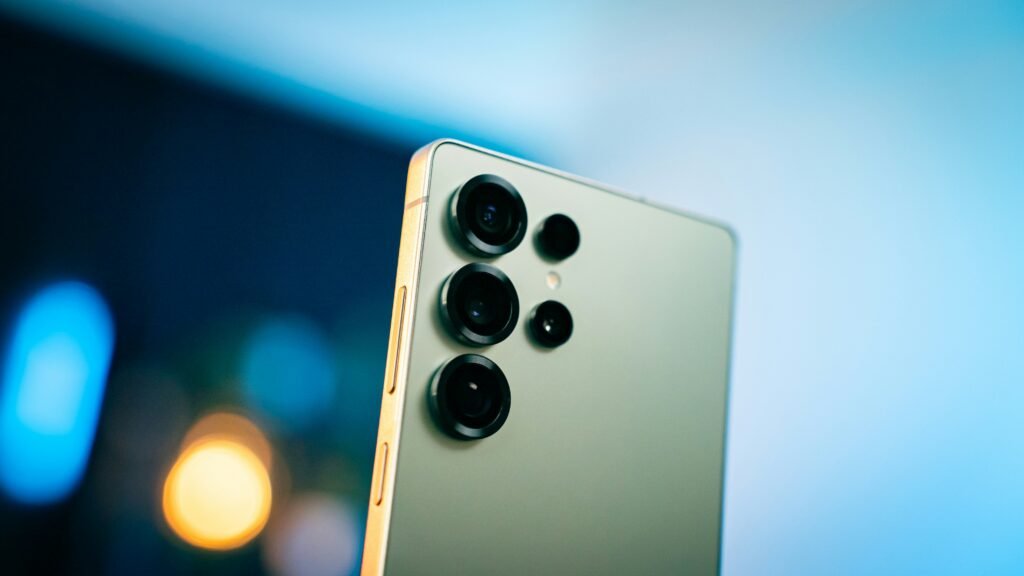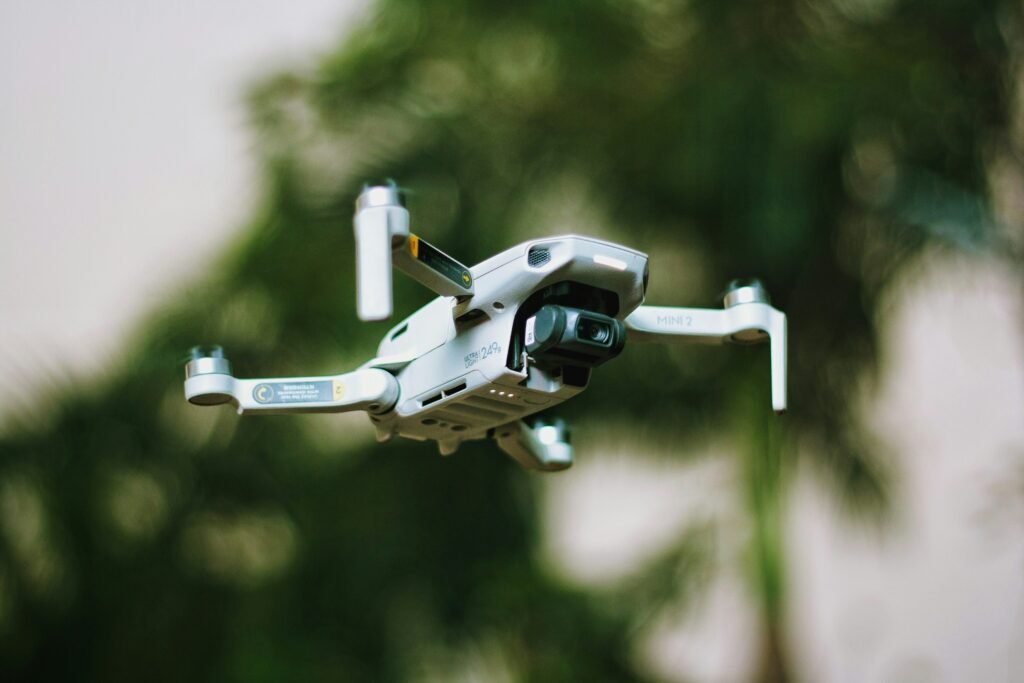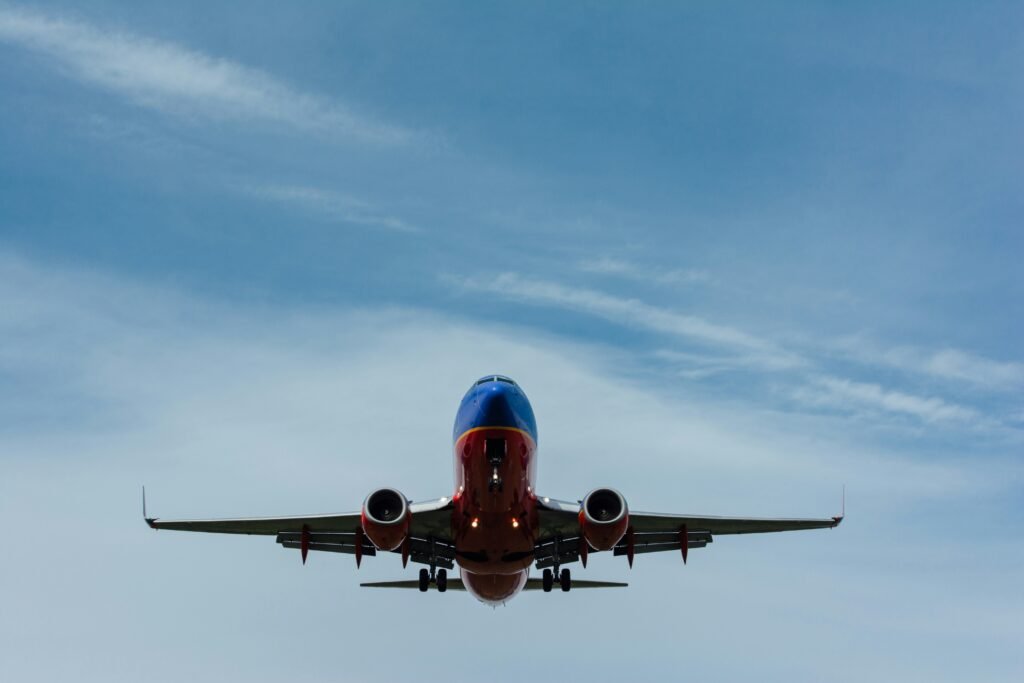
What are Drones?
Drones, often referred to as unmanned aerial vehicles (UAVs), are aircraft that operate without a human pilot onboard. These versatile machines have gained popularity in various sectors due to their ability to perform tasks that are often challenging or hazardous for humans. At their core, drones consist of four primary components: the airframe, propulsion system, control system, and payload.
The airframe provides the structural integrity of the drone and houses all other components. It can vary in size and design depending on its intended use. The propulsion system, typically comprising motors and propellers, allows the drone to fly. The control system, which includes the drone’s onboard computer and sensors, is essential for navigation, stability, and communication with the operator. Lastly, the payload refers to any additional equipment the drone carries, such as cameras, sensors, or delivery packages.
Drones come in various types to serve different purposes. Recreational drones are often used by hobbyists for personal enjoyment, allowing users to capture aerial footage or engage in drone racing. In contrast, commercial drones have gained traction in industries such as agriculture, photography, and logistics. These drones offer advanced features, including GPS navigation and high-resolution cameras, useful for surveying land, monitoring crops, and even delivering goods.
In industrial settings, drones are employed for tasks such as infrastructure inspection and environmental monitoring. Equipped with specialized sensors, they can easily detect anomalies and collect data in hard-to-reach areas. Overall, the adaptability of drones makes them invaluable across numerous applications, showcasing their significance in modern technology and innovation.
The Rise of Drone Technology
The evolution of drone technology has marked a significant turning point in various industries, encompassing aerial photography, agriculture, delivery services, and more. Initially, unmanned aerial vehicles (UAVs) were primarily utilized for military applications, conducting reconnaissance and surveillance missions. However, as technology advanced, the potential of drones expanded remarkably. Key milestones in this evolution include the transition from military to commercial uses, driven by the miniaturization of components and improvements in flight stability and control systems.
The 2000s witnessed a rapid increase in the development of consumer drones, particularly with the introduction of models from various manufacturers, including DJI. These advancements included enhanced battery life, GPS capabilities, and high-definition cameras, making drones more user-friendly and accessible to the general public. As prices fell and features improved, individuals and small businesses began to adopt drones for various applications, including aerial photography, inspections, and surveying.
Moreover, the regulatory framework surrounding drone usage has also evolved. Governments across the globe started to address the challenges posed by the increasing presence of drones in the civilian airspace. This led to the establishment of guidelines and safety regulations that facilitate responsible drone operation while ensuring airspace safety. Such developments have spurred growth in the drone market, as prospective users now have clearer pathways to obtain necessary permits and knowledge for responsible drone flying.
Another significant factor contributing to the rise of drone technology is the integration of intelligent features, such as automated flight planning and obstacle avoidance systems. These features have not only improved safety but also simplify the user experience, allowing even novices to operate drones with relative ease. As technology progresses, we can anticipate further innovations that will broaden the scope of drones and increase their usability across various sectors.
What are DJI Drones?
DJI, short for Da Jiang Innovations, is a Chinese technology company established in 2006 and serves as a pivotal player in the drone market. Renowned for their cutting-edge technology and innovation, DJI has consistently set high standards for aerial systems, serving various sectors including film, agriculture, search and rescue, and mapping. The company has carved a niche by offering expertly designed drones that cater to both professionals and enthusiasts, making it an industry leader.
One of the hallmark features of DJI drones is their advanced stabilization systems, such as the gimbal technology, which allows for smooth and steady footage, regardless of wind conditions. Additionally, these drones are equipped with high-resolution cameras, enabling users to capture stunning aerial photography and videography with incredible clarity. The incorporation of intelligent flight modes, such as ActiveTrack, TapFly, and Waypoint navigation, provides users with an intuitive flying experience, enhancing operational efficiency.
Furthermore, DJI continuously pushes the boundaries of innovation by integrating features like obstacle avoidance technology, which significantly enhances safety during flight. The company’s commitment to developing user-friendly interfaces, backed by robust mobile applications, allows drone operators to easily manage their devices and access real-time flight data. This combination of advanced technology and practicality has made DJI drones popular among filmmakers and aerial photographers, who value high-quality outputs delivered with precision and reliability.
Additionally, DJI takes pride in its comprehensive support and service network, ensuring users have access to resources and assistance when needed. With a vast array of models available, including the Phantom series, Mavic series, and the Inspire series, DJI drones offer something for everyone—from hobbyists to professionals seeking to elevate their creative projects. Overall, DJI’s groundbreaking innovations and unwavering focus on quality have solidified its status as a leader in the drone industry, continually redefining what is possible in aerial technology.
Key Features of DJI Drones
DJI drones have carved out a significant position in the marketplace, primarily due to their exceptional features that cater to both amateur and professional users. A standout element is their camera quality. DJI has integrated advanced camera technology into their models, enabling users to capture stunning visuals with high resolution and clarity. Many models come equipped with 4K cameras, providing professional-grade video quality with vibrant colors and intricate details, appealing to filmmakers and content creators alike.
Flight stability is another hallmark of DJI drones. Utilizing innovative technologies such as GPS positioning and advanced gyroscopes, these drones can maintain a steady flight path even in challenging weather conditions. This stability not only enhances the quality of captured footage but also ensures user-friendly operation for beginners. Furthermore, the incorporation of intelligent flight modes allows for increased maneuverability and creative possibilities, making it easy to execute complex shots with minimal effort.
The software capabilities of DJI drones add another layer of sophistication. The DJI Fly or GO 4 apps provide a user-friendly interface that enhances the overall flying experience. These applications offer real-time telemetry data, customizable flight settings, and access to a range of editing tools, thus streamlining the post-production process. Additionally, users can benefit from features such as automated flight planning and aerial mapping, ensuring versatility and functionality.
Safety features are paramount when considering drone technology, and DJI does not disappoint in this regard. Many models include obstacle avoidance technology, which helps prevent collisions while flying. Furthermore, DJI drones often come with return-to-home functionality. This ensures that the drone safely returns to its takeoff point in the event of a lost connection or low battery, greatly increasing the safety of the flying experience. These key features collectively underpin why DJI drones are favored among enthusiasts and professionals alike.
Popular Models of DJI Drones
DJI has established itself as a leader in the drone industry, with various models tailored to meet the needs of different users. Among the most popular models is the DJI Mavic Air. Compact and portable, it offers an impressive balance of performance and functionality, making it ideal for enthusiasts and semi-professionals alike. With a 4K camera, intelligent shooting modes, and a flight time of up to 21 minutes, the Mavic Air appeals to both casual users looking to capture stunning aerial footage and serious hobbyists seeking to elevate their aerial photography skills.
Another notable model is the DJI Phantom series, which has become synonymous with high-quality aerial imaging. The Phantom 4 Pro, for instance, boasts a robust set of features, including a 20MP sensor, 4K video capabilities, and advanced obstacle sensing systems. This model is particularly popular among professional photographers and videographers due to its reliability and exceptional image quality, making it suitable for commercial applications in real estate, filmmaking, and inspection services.
The DJI Mini series brings portability to the forefront without compromising on performance. The DJI Mini 2, for example, weighs less than 250 grams, thereby exempting it from some regulatory requirements while still delivering features like 4K video and a range of up to 10 kilometers. This makes it an excellent choice for travelers and those new to drone flying since it is easy to carry and operate. Overall, the diverse range of models offered by DJI allows users of different skill levels—from casual hobbyists to professional creators—to find a suitable drone to meet their specific needs and preferences.
Applications of DJI Drones
The versatility of DJI drones has led to a significant increase in their adoption across numerous fields, transforming how professionals approach tasks ranging from photography to agriculture. One of the most prominent applications is in the realm of photography and videography, where DJI drones provide unique aerial perspectives that were once difficult or impossible to capture. Their high-resolution cameras enable filmmakers and photographers to create stunning visuals, making them invaluable tools for promotional content, real estate showcasing, and cinematic projects.
In the agricultural sector, DJI drones are employed for precision farming, facilitating crop monitoring, soil analysis, and field mapping. Farmers can utilize aerial imagery to assess crop health, optimize irrigation, and manage resources more efficiently. By collecting detailed data, these drones help agronomists increase yield and sustain agricultural practices.
Construction and real estate industries also benefit from the capabilities of DJI drones. These aerial vehicles allow for the efficient surveying of job sites, providing real-time data that assists in project management and safety inspections. Drones help stakeholders visualize project progress and ensure compliance with building regulations by delivering accurate site assessments without the risks associated with traditional methods.
Another critical application of DJI drones is in search and rescue operations. Equipped with thermal imaging technology, these drones facilitate rapid mapping of disaster zones, enabling first responders to locate individuals in need of assistance more effectively. Their ability to cover large areas quickly enhances operational efficiency, often making a significant difference in emergency situations.
Moreover, industries including marketing, insurance, and environmental monitoring increasingly rely on DJI drones, illustrating their broad adaptability. With ongoing advancements in drone technology, the potential applications are expected to expand, reinforcing the role of DJI drones as essential tools across various sectors.
Getting Started with DJI Drones
For those interested in delving into the world of aerial photography and videography, DJI drones present an accessible entry point. Selecting the appropriate model is the initial task. DJI offers a range of options, from beginner-friendly models like the DJI Mini series, which are compact and user-friendly, to advanced options such as the Mavic and Phantom series that cater to more experienced users. When choosing a drone, consider factors such as camera quality, flight time, ease of use, and budget. Each model has unique features that can enhance your flying experience, so research is crucial.
In addition to selecting the right drone, understanding the regulations governing drone flight is vital. Various countries and regions impose specific rules regarding height limits, no-fly zones, and registration requirements. Familiarize yourself with local laws to ensure compliance and promote safe flying practices. The Federal Aviation Administration (FAA) in the United States, for instance, requires that recreational drone operators register their drones if they weigh more than 0.55 pounds. Checking local regulations can prevent potential legal issues and enhance overall safety when flying.
Once you have your DJI drone and are aware of the regulations, the next step is to learn basic flying techniques. Begin by practicing in open areas away from obstacles and people. Familiarize yourself with the remote controller, and use the drone’s beginner mode to limit flight capabilities as you build confidence. Starting with short flights and gradually extending them allows for a better understanding of how to control the drone effectively. Additionally, utilizing the DJI Go or DJI Fly app can provide valuable insights into your drone’s performance and battery status.
The Future of Drone Technology
The landscape of drone technology is constantly evolving, influenced by rapid advancements in various domains such as artificial intelligence (AI), enhanced autonomy, and regulatory frameworks. As we look ahead, the emergence of AI capabilities promises to revolutionize how drones operate, enabling them to perform complex tasks with minimal human intervention. For instance, the incorporation of machine learning algorithms can allow drones to analyze and interpret data in real time, facilitating smarter decision-making processes during their missions.
Moreover, the trend towards increased autonomy is set to redefine operational standards within the drone industry. With ongoing developments in navigation systems and obstacle avoidance technologies, future drones are expected to execute flights with superior precision and reliability. These innovations will not only improve operational efficiency but also ensure the safety of both the drones and the environments in which they operate. As a result, industries such as agriculture, logistics, and surveillance will significantly benefit from employing autonomous drones, reducing human resource dependency and operational costs.
Regulatory changes are another critical aspect shaping the future of drone technology. Governments around the world are recognizing the potential of drones and are actively formulating policies to facilitate their integration into various sectors. This includes establishing air traffic management systems designed for drones, ensuring safe coexistence with manned aircraft, and developing guidelines for commercial usage. Enhanced regulatory frameworks will enable businesses to harness the power of drone technology while ensuring public safety and compliance.
In conclusion, the future of drone technology is poised for remarkable growth driven by innovations in AI, autonomy, and regulatory advancements. As these trends unfold, it will be essential for stakeholders to adapt and leverage these developments to maximize the potential of drones across multiple sectors, fostering a new era of efficiency and capability in various applications.
Conclusion
In conclusion, DJI drones have established a prominent position within the drone market, offering innovative solutions that cater to a variety of sectors including photography, cinematography, agriculture, and data collection. The brand’s ability to integrate advanced technology with user-friendly interfaces has made it accessible to both novice users and professional operators alike. This versatility not only showcases DJI’s commitment to innovation but also illustrates the broader impact of drone technology on multiple industries.
Moreover, the applications of DJI drones extend far beyond recreational use. In film and television, aerial cinematography has become more accessible, providing filmmakers with creative capabilities that were once only achievable through traditional methods such as helicopters. Various industries, including real estate and construction, have also embraced these drones for their ability to capture high-resolution imagery and gather data from vantage points that were previously difficult to access.
Furthermore, DJI has continuously pushed the boundaries of drone technology with features like obstacle avoidance, automated flight paths, and enhanced stabilization, significantly improving the user experience. The integration of artificial intelligence and machine learning in their drone models also paves the way for autonomous operations, enabling various industries to optimize efficiency and reduce operational costs.
As drone technology evolves, DJI remains at the forefront, reinforcing its role as a leader in innovation. By understanding the various applications and operational strengths of their drones, users can harness their capabilities to achieve greater effectiveness in hobbies and professional pursuits. The future of DJI drones unfolds with the promise of continued advancements that will further enhance the versatility and utility of these remarkable flying machines.




